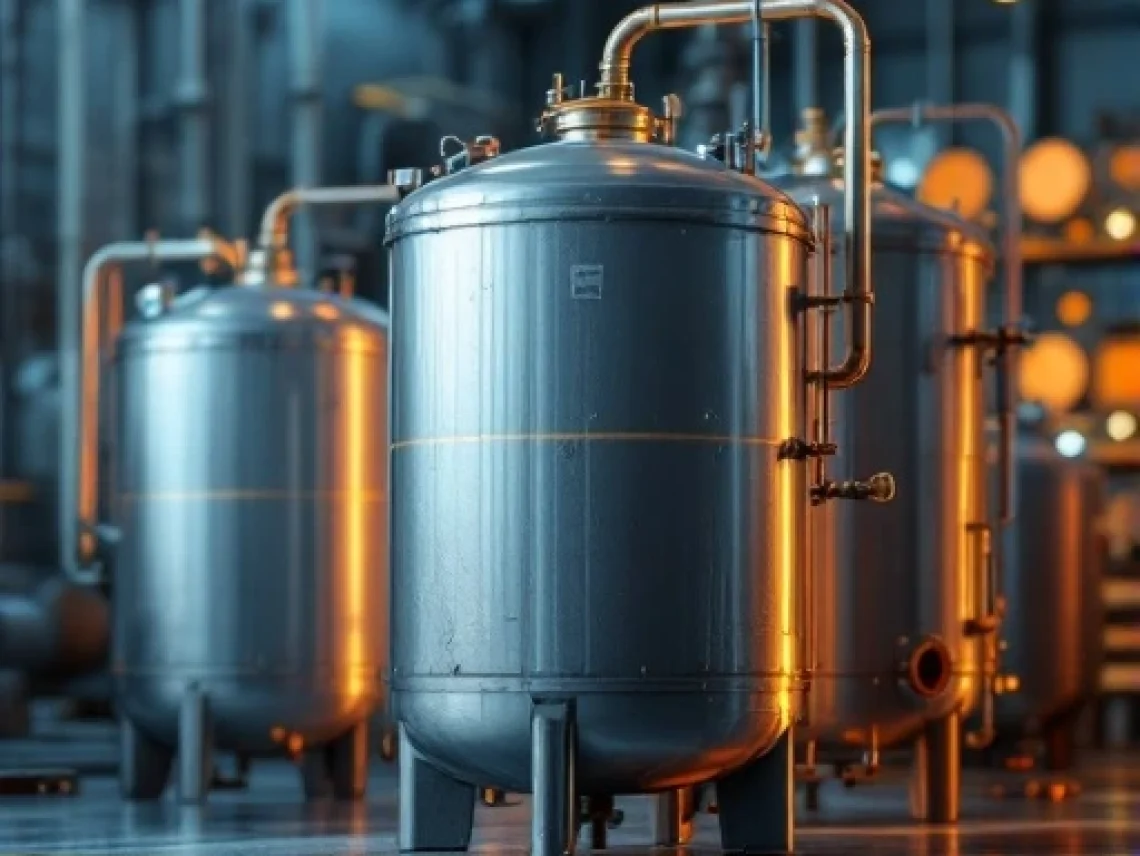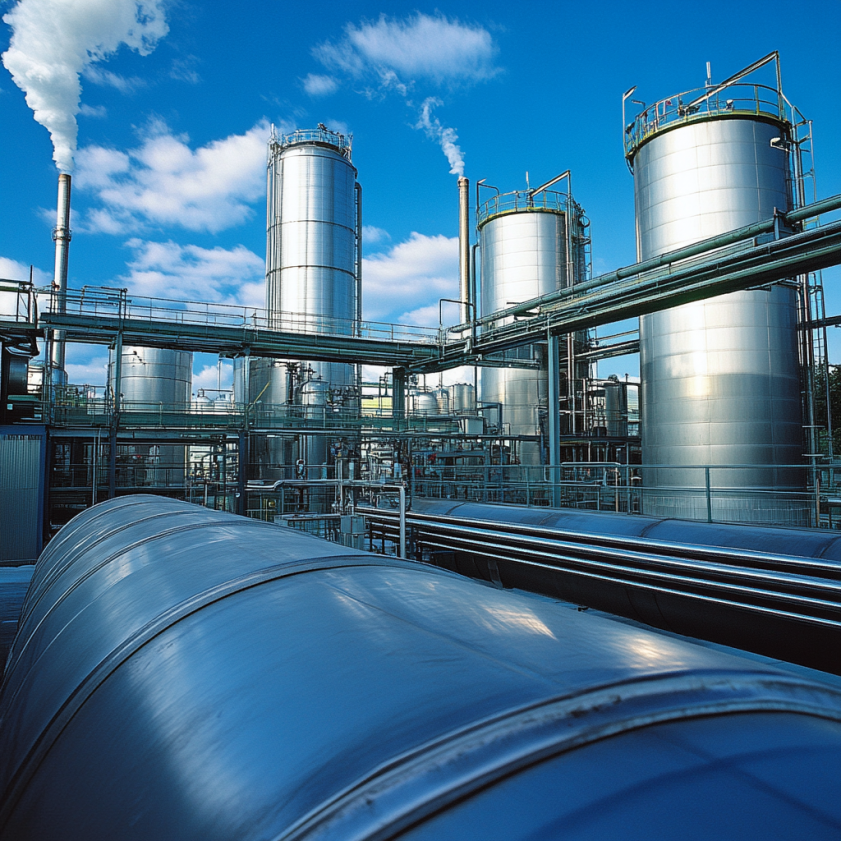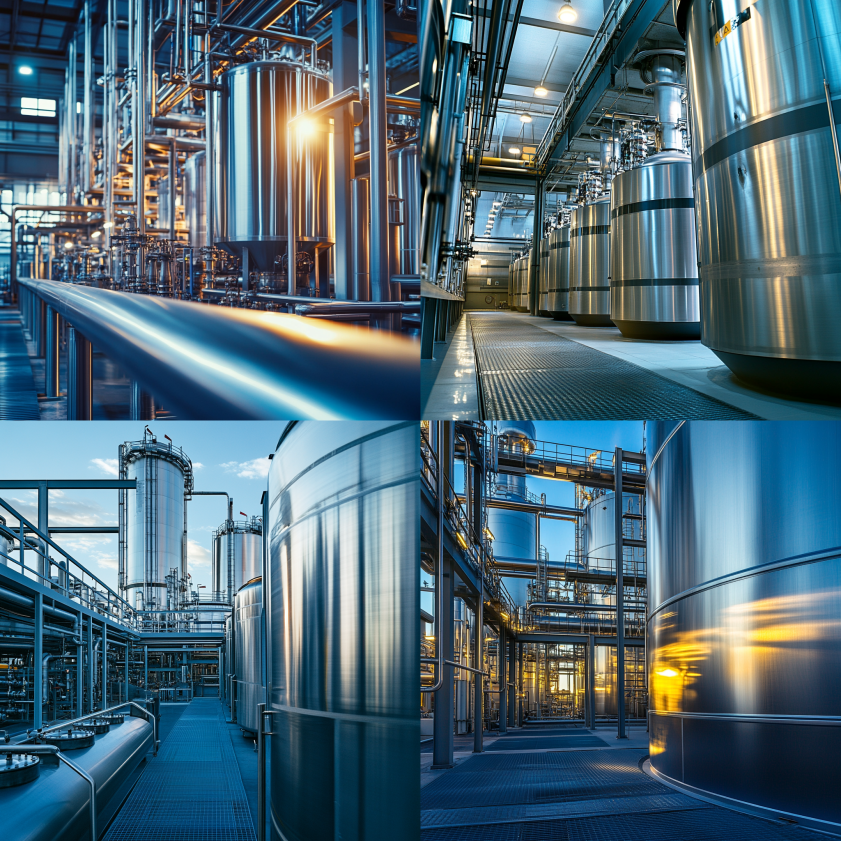

In the vast landscape of industrial engineering, few components are as crucial—and as In industrial engineering, the purpose of a pressure vessel cannot be overstated. These essential components are integral to industries like oil refining, chemical processing, and food manufacturing. While they operate quietly behind the scenes, pressure vessels perform critical functions that allow these industries to function efficiently and safely.
At its core, the purpose of a pressure vessel is to safely contain gases or liquids at pressures significantly higher or lower than atmospheric pressure. This unique ability enables industries to carry out complex operations, store pressurized fluids, and generate energy with precision and safety.
In industrial applications where high-pressure containment is required—such as ammonia synthesis, oil cracking, and steam generation—the purpose of a pressure vessel is irreplaceable. These vessels maintain system stability by withstanding immense internal and external forces, making them indispensable for continuous and safe plant operations.
If a pressure vessel fails, the consequences can be catastrophic. As seen in the 2009 ConAgra Foods explosion, poorly designed or malfunctioning vessels can cause significant damage, injuries, or worse. That’s why pressure vessel design, construction, and usage are tightly regulated by standards such as the ASME BPVC (Boiler and Pressure Vessel Code).
Pressure vessels are found in almost every industrial sector, playing a pivotal role in operations. Some of the most common applications where the purpose of a pressure vessel is critical include:
At Red River, we understand the importance of the purpose of a pressure vessel in these industries and ensure that every solution we provide meets or exceeds industry standards.
The purpose of a pressure vessel is far more than just a technical necessity. It’s a critical safety and operational component that enables industries to run smoothly and efficiently. With the proper design, materials, and maintenance, pressure vessels keep operations safe and compliant, ultimately contributing to the success of an entire sector.
Pressure vessels are built on the principles of thermodynamics, materials science, and mechanical engineering. Their operation depends on careful balancing of forces, stress management, and temperature control.
When gas or liquid is confined, it exerts force on its container. The walls of the pressure vessel must be thick and strong enough to resist rupture. Designs vary based on pressure level, medium type, temperature, and corrosion potential.
Shapes such as cylinders and spheres are favored for their uniform stress distribution. Spherical vessels are optimal for extremely high pressures, though more expensive to manufacture, while cylindrical vessels offer better storage capacity and are more cost-effective.
The choice of materials depends on the operating environment. Some of the most commonly used materials include:
Vessels may also be clad or lined with other materials to prevent corrosion or contamination.
Typical pressure vessel components include:
To ensure operational safety, pressure vessels undergo rigorous testing such as:
These tests are not just best practices—they’re often legally required for certification by organizations like the National Board of Boiler and Pressure Vessel Inspectors or per ASME Section VIII.

Let’s explore specific use cases where pressure vessels demonstrate their critical value.
Storing gases like oxygen, hydrogen, nitrogen, and propane under pressure requires secure containment. Cylindrical or spherical vessels ensure these gases are stored in liquid or vapor form under controlled conditions.
Applications include:
Transportable pressure vessels (tubes, tank cars) make it possible to move these materials over long distances.
In chemical processing plants, pressure vessels serve as reactors where raw materials undergo transformation under high-pressure and temperature conditions. For example:
These reactions are highly sensitive and require a closed, controllable environment. The vessel must resist internal pressure and aggressive chemicals simultaneously.
Boilers are pressure vessels designed to convert water into steam, which is used to:
These vessels operate under extreme conditions and must comply with strict inspection schedules and control measures.
Many pressure vessels double as heat exchangers, transferring thermal energy between fluids without mixing them. Examples include:
In the food industry, pressure vessels help with fermentation, carbonation, sterilization, and pasteurization. These systems must comply with sanitary standards like 3-A Sanitary Standards or FDA regulations, and are often made from food-grade stainless steel.
Fermenters in breweries, for instance, are pressure vessels carefully maintained to ensure consistent batch quality.
Given the high-stakes nature of pressure vessel applications, safety is paramount.
Compliance ensures vessels are built, tested, and maintained under globally accepted standards, reducing the risk of accidents. Key regulatory frameworks include:
Pressure vessels are subject to:
Inspection intervals are typically determined by the vessel’s risk category, operating history, and contents.
Failure to inspect or comply with these standards may result in:
Red River ensures all vessels are built and maintained with full compliance, giving clients peace of mind.
No pressure vessel should operate without safety features such as:
Modern systems may include digital monitoring tools for real-time status updates and predictive maintenance.
From the factory floor to the power plant, pressure vessels are integral to modern industry. Their purpose extends beyond containment—they enable critical reactions, power generation, and system stability. By safely storing and handling pressurized media, these vessels ensure production runs smoothly, efficiently, and without interruption.
Understanding the purpose of a pressure vessel helps businesses and engineers make informed decisions about design, materials, and compliance. As the demand for safer and more efficient industrial operations grows, pressure vessels will continue to serve as vital infrastructure.
When built and maintained correctly, pressure vessels protect lives, boost productivity, and support technological progress. They truly are the backbone of industrial efficiency.
At Mazzamuto Construction, we believe that safety, compliance, and durability should be at the heart of every project. Whether you need a custom-built pressure vessel or help with regulatory alignment, our team is ready to support your industrial needs.
Red River specializes in the design and manufacturing of pressure vessels. We also fabricate related items such as prefabricated spools and skid packages.
Reach out to us today and experience the Red River difference. Where American-made products and American Values come together, we care more.
To safely contain gases or liquids at a pressure significantly different from atmospheric pressure for industrial processes.
They can be if not properly designed, maintained, or operated. However, with correct construction and regular inspections, they are very safe.
There are horizontal, vertical, and spherical pressure vessels, each suited to specific applications and pressure ranges.
Carbon steel is commonly used due to its strength and cost-efficiency. Stainless steel is favored in corrosive or sanitary environments.
Organizations like the ASME (in the U.S.) and PED (in Europe) regulate pressure vessel design, fabrication, and use.
Most vessels undergo annual or semi-annual inspections, depending on usage and local regulations.
Yes. Many manufacturers create pressure vessels tailored to specific dimensions, pressures, and chemical conditions.
A failure could cause explosions, toxic leaks, or fire. This is why safety systems and regular inspections are non-negotiable
In the realm of industrial solutions, Red River emerges as a pioneer, offering a diverse range of custom-engineered products and facilities. Among our specialties is the design and production of Custom/OEM Pressure Vessels, meticulously crafted to meet individual client requirements, ensuring performance under various pressure conditions. Our expertise extends to the domain of prefabrication, where Red River leads with distinction.
The company excels in creating prefabricated facilities, modules, and packages, reinforcing its stance as a forerunner in innovation and quality. This proficiency is further mirrored in their Modular Skids offering, where they provide an array of Modular Fabricated Skid Packages and Packaged equipment. Each piece is tailored to client specifications, underlining their commitment to delivering precision and excellence in every project they undertake.